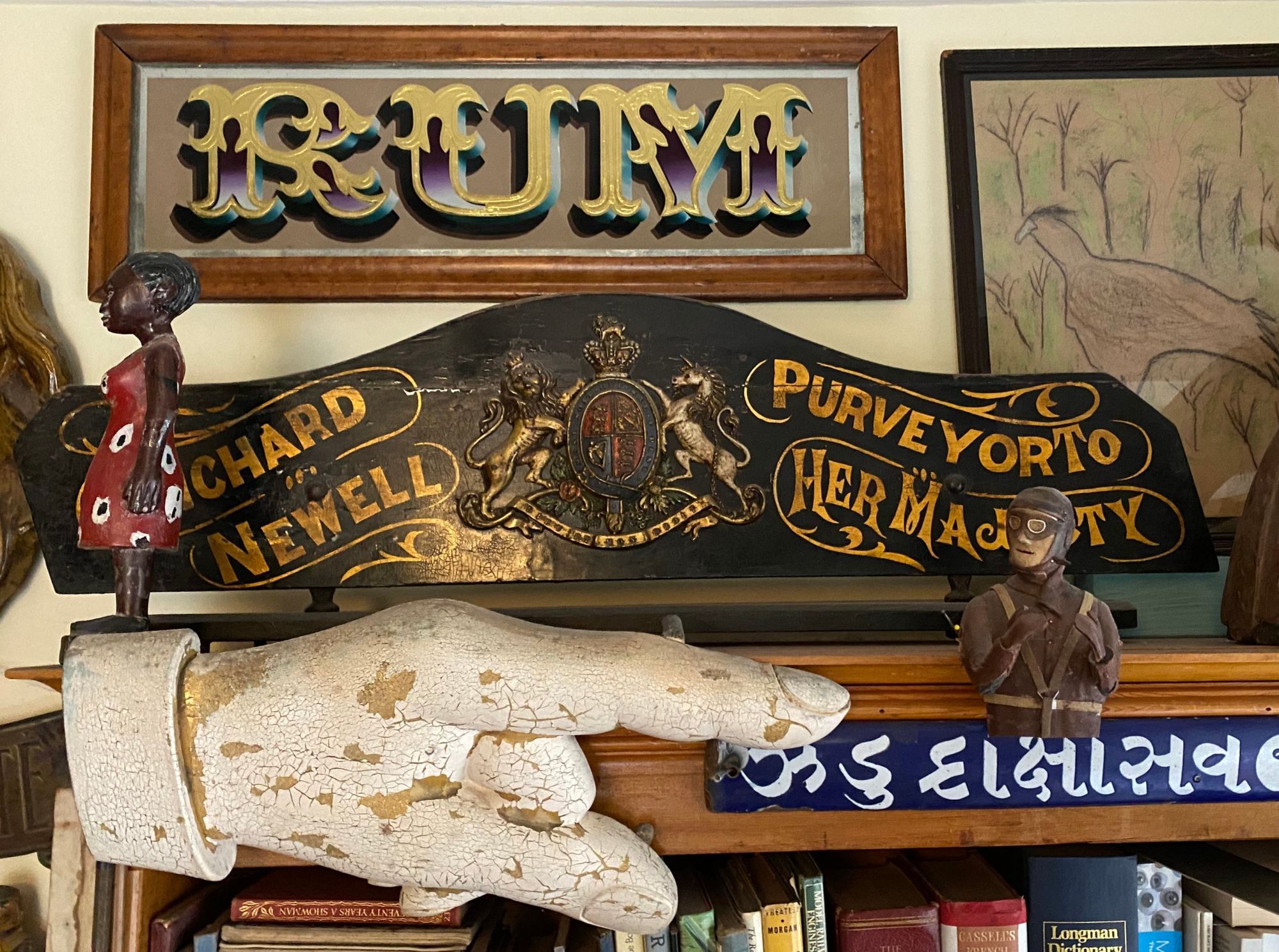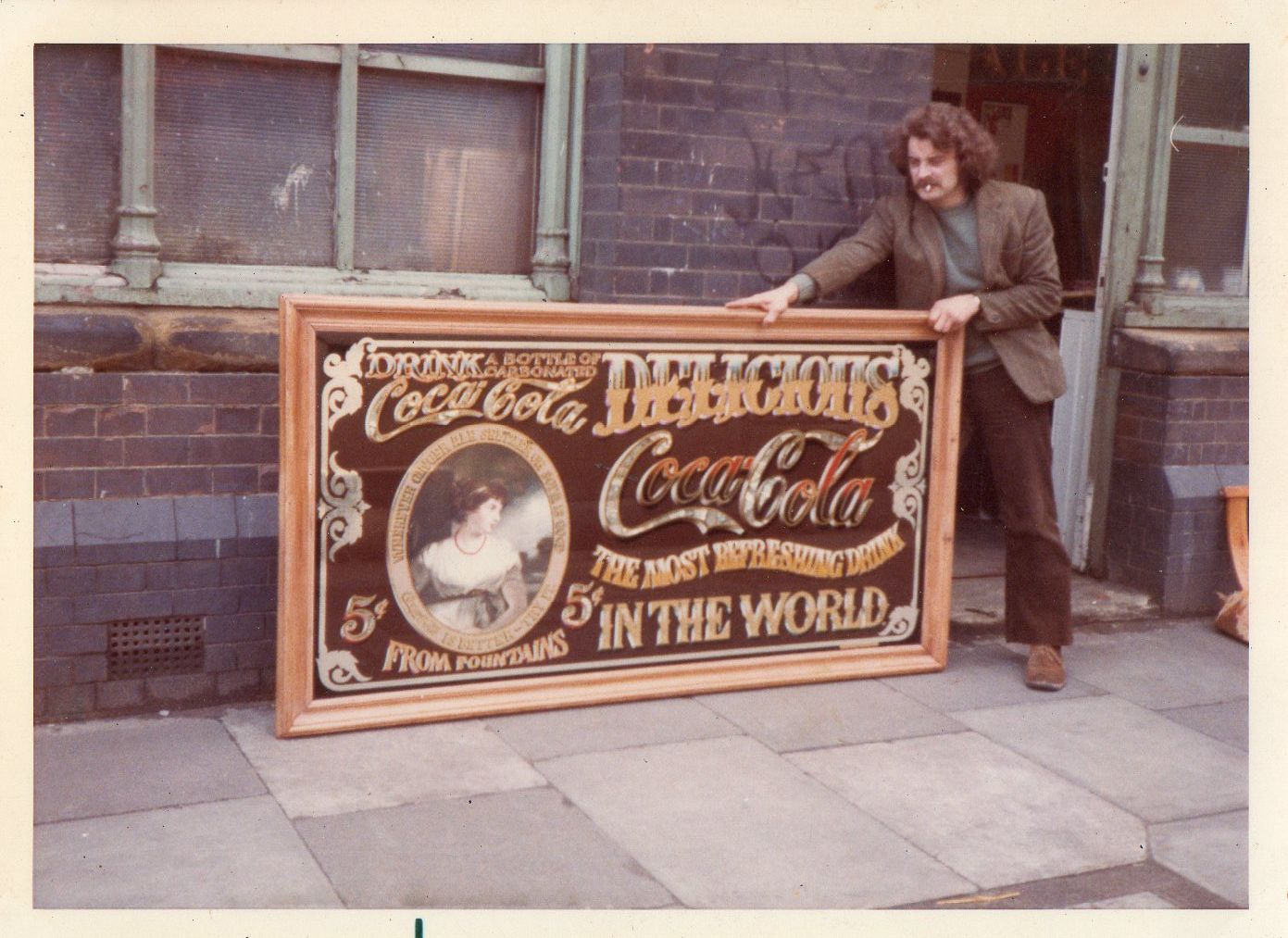Grierson Gower's Treasure Trove of Antique and Vintage Signs
A look inside the home of Grierson Gower, and his vast collection of antique and vintage signs.

It was perhaps fate that design, paint, and gold leaf would come to feature prominently in Grierson Gower's life and work: his father was a designer, painter and sculptor, and his grandfather a designer and decorative gilder specialising in churches. His father was working at the Festival of Britain where, as a seven-year-old, Grierson first encountered signwriters and signwritten work. It was an experience that made a lasting impression on the young boy.
An Artistic Calling
Grierson was born in Blackpool in 1944, one of many 'evacuee embryos' resulting from pregnant women being taken away from London during the second world war. After spending his early years in London, his family moved to Surrey to be closer to his boarding school. From there he attended art college in Guildford, and then Swansea where his mother had relocated after divorcing his father.
He studied painting, and did some signwriting work on the side while still a student. He also had a line in buying Welsh furniture and taking it to London to sell at a profit. These two 'side hustles' would later form the basis for Grierson's working life.
Enter Relic Designs
After graduating, Grierson spent a short time teaching. He then started work as a graphic designer in 1965, earning £5 ($6) per week while living in a basement flat on Wimpole Street in central London. In 1969, he founded Relic Designs, working as a glass etcher and signwriter in St Pancras, London. This was in partnership with Malcolm Gliksten who ran the commercial side of things. Together they found a niche in screen printing and the production of retro mirror and glass signs.

Grierson was, and remains, keenly interested in the history of the sign industry. At the request of clients, he would sometimes sign works with 'decoy' signatures to add to their supposed authenticity. He had a varied and international clientele, which included John Wayne among them.
